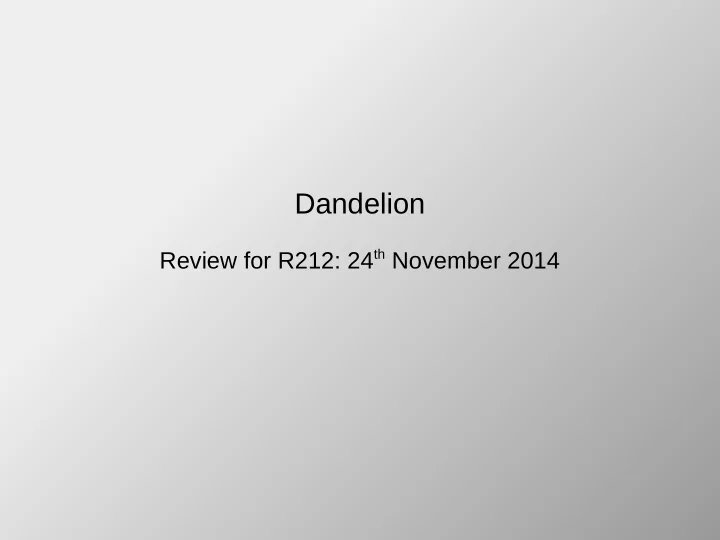

Dandelion Review for R212: 24 th November 2014
Motivation GPU, FPGA, Vector processors becoming increasingly common (data parallel, power requirements, SIMD, etc.)
What is Dandelion? ● Compiler for native .NET-based LINQ Compiler code (in C# or F#) for GPU programming ● Abstract scheduling details from programmer: Runtime Multi {machine, CPU, GPU}
Compiler ● Clean interface to CUDA ● Deal with CUDA complexities – e.g. dynamic memory allocation ● Bytecode compilation: benefits ● Static analysis
Runtime ● Needs to consider three scenarios: – Machine-machine – CPU-local – GPU
Runtime ● Needs to consider three scenarios: – Machine-machine – CPU-local – GPU
GPU dataflow
GPU dataflow
Compute cluster ● Two techniques: – Dryad: persistent storage, high availability – Moxie (developed for Dandelion): Spark-like in-memory storage and checkpoints
Compute cluster ● Two techniques: – Dryad: persistent storage, high availability – Moxie (developed for Dandelion): Spark-like in-memory storage and checkpoints Master Master Master Container Container Container
Evaluation
Single machine performance
K-means 20x less code
Criticisms ● No discussion of inter-machine scheduling and associated overheads ● Claim to support FPGAs, but no evaluation of this (cost reasons perhaps?). ● Still suffering Garbage Collection due to managed runtime overheads. ● More evaluation beyond k-means?
Summary ● Data-parallel hardware becoming mainstream; need high-level programming support. ● Dandelion schedules work onto GPUs (and others) from a high-level C# or F# implementation ● Achieves noticeable (30x+) speed improvements through use of GPUs, without learning overhead of CUDA or similar.
Recommend
More recommend